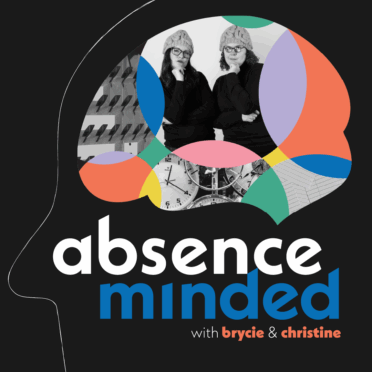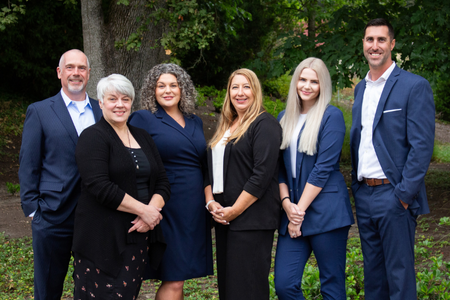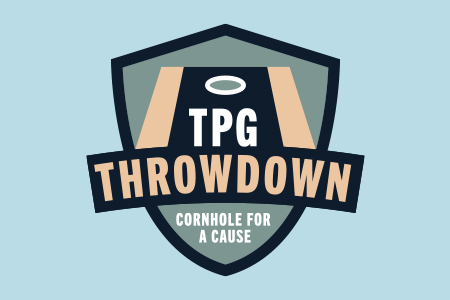In the ever-evolving world of leave law, employers just can’t help falling in leave with new regulations . . . whether they want to or not. And boy, do the updates keep on coming: from the DOL reviving a self-audit program that now covers FMLA, to Congress making a PFML tax credit permanent (with a few twists), to state legislatures adding, amending, and sometimes even repealing leave laws. We’ve rounded up the biggest changes, and a few that might have you singing the blues, so you can stay in tune and in compliance.
FEDERAL UPDATES

PAID Act
Before we dive into all the states who decided to do all the things this past quarter, let’s dive into some updates at the federal level. In July, the Department of Labor resurrected its Payroll Audit Independent Determination (PAID) program, which encourages employers to own up to and resolve potential minimum wage and overtime violations under the Fair Labor Standards Act. For the first time, the DOL is extending this program to potential violations under the Family and Medical Leave Act as well.
The PAID Program was introduced under the first Trump administration and, at that time, conducted more than 200 payroll audits and recovered wages for over 19k EEs. At that time, the program was limited to FLSA payroll violations only.
The PAID program can be summarized in a couple steps:
- Employer conducts a self-audit to identify potential FMLA violations.
- Employer works with the DOL Wage & Hour Division to correct apparent violations and pay back wages (if any) or implement other remedies.
The program is voluntary and aims to promote compliance without litigation.
The DOL outlined the following eligibility criteria for participating:
- The employer is a covered under the FMLA.
- Employees included in the employer’s PAID self-audit are not subject to prevailing wage requirements.
- Neither the DOL nor a court has found an FMLA violation at the employer within the last three years.
- The employer is not currently a party to any litigation claiming a violation of the FMLA practices at issue in the self-audit.
- DOL is not currently investigating the FMLA practices at issue in the proposed self-audit.
- There are no FMLA or state leave law complaints with the DOL or a state enforcement agency claiming the leave practices at issue in the self-audit violate the FMLA.
- The employer has not participated in PAID within the last three years to resolve potential FMLA violations (essentially, don’t do this twice in three years, but let’s face it, who would want to?).
For employers who wish to self-audit and report their possible FMLA violations, the DOL anticipates you first will review its “FMLA checklist,” which consists of a basic set of topics that will be part of your FMLA self-audit.
Has your train jumped off the tracks yet? Mine has, and I know what you’re wondering: why would we volunteer to participate in such a program? During this year’s Annual DMEC conference in Washington, DC, I attended a session with the DOL where they outlined some additional insight. The DOL stated participation in a voluntary audit is a good faith effort on the part of an employer that isn’t the result of an investigation. There will be a waiver of liability from workers that comes as part of the program. It also provides the opportunity to tailor what is being audited and remedies. The goal is a collaborative approach that will result in an overall better outcome.
I’m not saying I am convinced, but thought this was helpful insight for employers considering participation.

One Big Beautiful Bill Act – PFML Tax Credit
Congress recently passed a budget and tax bill — the One Big Beautiful Bill Act (OBBB) — making permanent a tax credit for employers who offer paid family and medical leave (PFML).
Congress first passed the temporary credit in 2017. The credit was extended temporarily several times and allowed employers to claim a general business credit for voluntarily offering PFML to eligible employees. The credit is worth 12.5% of the employee’s wages for a leave period and goes up by 0.25% for each percentage point of wages paid over 50%, up to 25%.
The OBBB expands the credit in a couple of ways.
1. In addition to claiming a credit for wages paid, employers can now also get a tax credit for a portion of insurance premiums paid for an employee on PFML.
2. Credit is now available for employers in states with mandated PFML laws. Previously, employers in those states were not eligible for the credit. Before you get too excited, please keep reading. . . . Employers who provide more than their state’s mandated paid family medical leave can claim a tax credit on the wages and insurance premiums paid during leave in excess of state requirements. For example, if a Minnesota employer provides 100% of wage replacement benefits (the state mandates up to 90%), the amount of benefit the employer provides in excess of the state requirement could be claimed a credit.
The credit is available only to employers who offer a voluntary fully-insured PFML benefit to employees.
To claim the credit, employers must have a written policy that offers a minimum of two weeks of PFML annually or a policy offering more than their state’s mandated paid family and medical leave.
Employers considering this should adopt a written policy that meets IRS requirements, leave is paid at least 50% of wages, and covers all qualifying employees.

FAIR Leave Act
Currently, if two employees are married and work for the same company, the Family and Medical Leave Act (FMLA) lets their employer cap their combined leave at 12 weeks. A new bill in Congress proposes to eliminate that restriction.
This is a bipartisan bill (it apparently exists!) called the FAIR Leave Act and would amend the FMLA by eliminating the provision that limits the total amount of leave available to spouses working for the same employer. If enacted, the change would allow each eligible spouse to take the full 12 weeks of FMLA leave for certain qualifying events.
Under current law, Section 102(f) of the FMLA allows an employer to limit the combined amount of leave two spouses can take – up to 12 weeks total – when the leave is for:
- The birth or placement of a child, or
- To care for certain family members with a serious health condition.
The Fair Access for Individuals to Receive Leave Act (the “FAIR Leave Act”) would repeal this provision.
CASE LAW

Slow and Steady Does Not Win the Race
Alisha Strife is an Army Veteran and longtime Aldine Independent School District employee. In August 2022, she formally requested permission to bring her certified service dog Inde to work. The dog helped with PTSD and physical disabilities, including balance issues and fall risk.
Strife provided letters from her VA care team and psychiatrist explaining why the dog was medically necessary. AISD didn’t immediately say no – but they didn’t say yes either. Employers, I get it, the request for service animals as a workplace accommodation is tricky. We hear it all the time – would if others have allergies, what if others fear dogs, etc.? That is a conversation for another day (call me!), but here is a helpful guide from askjan.org on service animals in the workplace.
Over the next several months, the district:
- Rejected documentation signed by a VA provider because she wasn’t a physician (not the most advisable course of action).
- Asked for nearly identical letters from a psychiatrist.
- Insisted on a third-party medical evaluation, despite ongoing documentation.
- Continued requesting clarifications, while providing no clear explanation of alternative accommodations.
By the time AISD finally granted the request in February 2023 – six months later – Strife had already filed a complaint with the EEOC and sued in federal court.
Initially, the district court dismissed her failure-to-accommodate claim, because AISD eventually approved the request and Strife hadn’t alleged a physical injury, there was no ADA violation.
The Fifth Circuit (Louisiana, Mississippi, and Texas) disagreed. The panel emphasized: “Delay in providing reasonable accommodation may show a lack of good faith in the interactive process.” Read the Fifth Circuit’s opinion here.
According to the court, this wasn’t just slow paperwork. Strife plausibly alleged that AISD dragged its feet while demanding increasingly unnecessary documentation, even after the VA confirmed her need for a service animal.
Under the ADA, failure to accommodate isn’t limited to flat-out denials. A constructive delay – especially when avoidable and prolonged – can be actionable too. Unlike the FMLA, the ADA doesn’t impose deadlines for accommodation responses. But if an employee provides adequate documentation, unexplained delays may trigger liability. Further, the ADA requires an “interactive process.” A pattern of redundant or excessive demands, as AISD did here, for proof may suggest bad faith. Finally, employers can request an exam if the documentation is truly insufficient. But in this case the employee submitted credible records from qualified medical professionals and requiring a third-party exam may have crossed the line.
STATE UPDATES
ALASKA
Paid Sick Leave Proposed Regulation
On June 25, 2025, the Alaska Department of Labor & Workforce Development released proposed regulations for the state’s new Paid Sick Leave law. The law became effective on July 1, but employers have been navigating implementation without final rules. These draft regulations offer helpful guidance, though they remain subject to change.
Employers are split into two groups – those with 14 or fewer employees and those with 15 or more. The draft rules say to count all types of workers based on the average number employed during the previous year – or the current year for new businesses. However, it remains unclear if the employee count for workforce size includes only Alaska or nationwide . . . which is an essential detail.
Employers can choose to frontload sick time annually (40 or 56 hours depending on employer size) rather than track hourly. Employers must adjust (“true up”) if the frontloaded amount ends up being less than what the employee would have accrued.
Cash-out options are also permitted under the draft rules. Employers can let employees choose between carrying over unused time or receiving a payout – but only if there’s a written policy and employees opt in voluntarily.
Employers can use existing PTO policies to meet compliance, as long as the time offered matches or exceeds the new law’s minimums and is usable for the same reasons. A paid sick leave “subbank” within a larger PTO policy is allowed – but employees must be notified.
Employees must give up to 10 days’ notice for planned absences, as long as this requirement is in the company’s written policy. For unplanned absences, employees must notify employers as soon as reasonably possible. If an absence lasts four or more consecutive days, documentation may be required – again, only if this is outlined in a policy.
By July 31, 2025, employers must provide notice to employees detailing key aspects of the law, including accrual rates, qualifying uses, and retaliation protections. The notice can be delivered electronically, by mail, in person, included in a handbook, or posted in a visible location.
Although not required by the statute, the proposed rules would require that paystubs show paid sick leave accrued, used, and remaining. This could be challenging for employers using broader PTO policies and may require system updates.

COLORADO
NICU Leave Available Under FAMLI Beginning January 1, 2026
Colorado’s Senate Bill 25‑144, signed into law by Governor Polis on May 30, creates a new “Neonatal Care Leave” under FAMLI that provides parents up to 12 additional paid weeks while their newborn is receiving inpatient care in a NICU, separate from the standard 12 weeks of bonding leave. This means eligible parents could receive up to 24 weeks of total paid FAMLI leave in qualifying situations. The law applies to claims commencing on or after January 1, 2026. This update relieves parents from having to use their paid bonding time during NICU hospitalization.
FAMLI Premium Rate Decrease Effective January 1, 2026
Senate Bill 25‑144 also confirmed the FAMLI contribution rate will drop from 0.90% to 0.88% of wages beginning January 1, 2026. Employees may still be responsible for up to half of the contribution, which means starting next year, an employee can’t be deducted more than .44% of subject wages, a notch below the current maximum employee contribution rate of .45% of wages. Critically, coordinate with your payroll team and/or vendor to make sure this change is accounted for heading into next year.
Other Misc. FAMLI Updates
Colorado is looking to engage in rulemaking within the next month to put more detailed parameters around how the NICU leave type will function, and to better define how the annual private plan maintenance fee will work. Depending on the outcomes, we’ll provide guidance on any impact directly to the private plan employers we support in Colorado.

DELAWARE
Paid Family and Medical Leave Amendments
The Delaware legislature has passed amendments to its paid family and medical leave (PFML) program.
The law allows employers to require coordination of HDFA payments and any other payments made to the employee under an employer-provided disability insurance or family care plan. The amended law specifies that disability insurance payments can be offset by HFA payments if so provided in a disability insurance policy.
Previously under the HDFA an employer could require employees to use their accrued paid time off before they receive HDFA benefits. If the employee is not required to exhaust their paid time off, their use of paid time off is deducted from their total length of HDFA leave. The amendments remove these provisions and instead provide that employers cannot require employees to use their accrued paid time off first. However, the employer and employee can agree that the employee may use paid time off to supplement any HDFA benefits. The amendments specify that the HDFA program is the primary payor.
The amended law allows employers using a private plan to provide family and medical leave benefits to begin collecting contributions from employees on July 30, 2025. Employers using a private plan need not provide documentation about claims to the state unless a specific claim is the subject of further inquiry.

ILLINOIS
Organ Donation Paid Benefit Amendments
Passed House and Senate, sent to the governor in June – if enacted this amendment would become effective January 1, 2026. The Illinois legislature has passed an amendment to the Employee Blood and Organ Donation Leave Act. The proposed amendment would allow part-time employees to use up to 10 days of leave in any 12-month period for organ donation. The law currently only applies to employers that have 51 or more employees and an eligible employee is a full-time employee who has been employed by a covered employer for a period of six months or more and who donates blood or an organ.
Prior approval would be required for the leave. If enacted, the employer would be required to determine the employee’s average daily earnings over the two months of employment before the leave and provide compensation for each day of organ donation leave based on that calculated average.
Family Neonatal Intensive Care Leave Act
The Family Neonatal Intensive Care Leave Act passed the House and Senate and was sent to the governor in June. If enacted the law would be effective Jan. 1, 2026. The proposed law would apply to public and private employers with 16 or more employees. For employers with 16–50 employees, the proposed law would provide employees with up to 10 days for unpaid neonatal intensive care leave while the employee’s child is in the neonatal intensive care unit (NICU). For employers with 51 or more employees, employees would have up to 20 days of unpaid leave. Leave could be taken either continuously or intermittently, and employers could require that the leave be used in minimum increments of at least two hours. The proposed law would allow an employer to require reasonable verification of the child’s stay in the NICU.
Neonatal intensive care leave would be in addition to any leave available under the federal Family and Medical Leave Act (FMLA). An employer cannot require employees to use available paid leave instead of the unpaid neonatal intensive care leave; however, an employee could voluntarily choose to do so. The proposed law would require that, upon return from neonatal intensive care leave, employees be reinstated to their previous position or the substantial equivalent without any loss of benefits. Employers would be required to maintain health insurance benefits during the leave period, as if the employee had not taken leave, and could not require employees to secure a replacement during their absence.

IOWA
Equal Treatment for Adoptive Parents
Effective July 1, 2025, Iowa’s new law (House File 248) requires employers to provide adoptive parents with the same employment-related benefits, leave policies, and protections as biological parents for one year following the placement of a child under six years old. This includes benefits like bonding leave, job protections, and any parental support offered in the workplace.
The law broadly defines “adoption” to include placements through the Iowa Department of Health and Human Services, licensed agencies, interstate compact agreements, or independent placements recognized under Iowa law.

MAINE
Paid Family & Medical Leave Amendments
Signed June 12, 2025, LD 894 cleans up several PFML mechanics. Big items: (1) Intermittent leave may be taken in whole‑day increments unless employer and employee agree to a smaller increment (but never less than one hour); (2) the Department can collect delinquent PFML premiums (including penalties) via civil action or levy; (3) successor liability attaches for unpaid PFML amounts in asset or business transfers; and (4) private‑plan employers can be fined if coverage lapses during a substitution period. These changes go into effect September 24, 2025, so they’ll be in place for the program launches on May 1 of next year.
Earned Paid Leave
LD 55 was signed July 1, 2025, and will be effective September 24, 2025. It keeps the 40‑hour annual accrual and 40‑hour annual use limits, but clarifies that carryover from the prior year does not reduce the ability to accrue up to another 40 hours – so balances can reach up to 80 hours where policies allow. Under the original EPL statute, any unused hours carried over from the prior year would reduce the amount of leave the employee could accrue in the current year because the original statute included a 40-hour overall accrual cap.
Although the amendment increases the maximum overall accrual cap to 80 hours, the annual accrual and usage limits remain unchanged. That said, employers may limit employees to accruing no more than 40 hours of leave per year and may limit employees to using no more than 40 hours of leave in any given year, even if their total accrued balance exceeds that amount from carry-overs
New PFML FAQs
The Maine DOL updated its existing employer FAQ document, and released a new FAQ for employees, covering contributions, private‑plan mechanics, notice/undue hardship, taxes, and appeals. Bookmark these – they’re evolving as we get closer to May 1 of next year. Both resources can be found on Maine’s PFML website, in the dropdown menus at the bottom.
Legislature’s Direction (No Big Rewrites)
Lawmakers rejected broader changes to Maine’s PFML program in this most recent session, advancing only targeted refinements like LD 894, so the program stays on course for the 2025/2026 rollout.

MARYLAND
Maryland FAMLI delay
If you’re an employer that’s eagerly awaiting Maryland’s paid family and medical leave law set to become effective July 1, 2026 . . . we got bad news for you.
Maryland has delayed their paid family and medical leave program. Ouch – it stings to even say it – but admitting it is the first step to acceptance.
If you didn’t know, back in 2022, the Maryland legislature voted to enact a paid family and medical leave law that would allow employees to take up to 12 weeks of paid leave per year for medical and family care reasons if they worked in Maryland for at least 680 hours in the preceding four calendar quarters. Maryland employers were set to begin making contributions of 0.9% to the state beginning on July 1, 2025. Employees would start receiving benefits on July 1, 2026.
In May 2025, Maryland officially delayed the program by over a year. Employers are now set to begin collecting and remitting contributions to the state on January 1, 2027, while employees can start receiving benefits on January 3, 2028.
I guess the PFML fun will have to wait, Maryland employers. But you know what they say, good things come to those that wait (by “good things,” we mean a more effective PFML program).
Maryland Parental Leave Act Amendment
Coordinating state leave laws with the FMLA can often be a tricky task for employers. Fortunately for Maryland employers, they have been given a gift – the gift of clearer regulations for administering FMLA alongside the Maryland Parental Leave Act.
Maryland’s Parental Leave Act (MPLA) covers employers that have had between 15 and 49 workers for at least 20 weeks in the current or preceding calendar year. An employer is covered by the FMLA if they employ 50 or more workers for at least 20 weeks in the previous or current calendar year. This means an employer could potentially be eligible for both programs, and susceptible to employee leave stacking, if they had less than 50 employees the prior year and now have more than 50 employees in the current year.
Effective October 1, 2025, Maryland is amending the law to clarify that any employers covered under the FMLA are excluded from coverage under Maryland’s Parental Leave Act.
I think this powerful quote from the insightful Maryland-based film Wedding Crashers sums up the general reaction to this news of reduced leave stacking: “Crabcakes and football! That’s what Maryland does!”
Or how about this: “Crabcakes, efficient leave processes, and football! That’s what Maryland does!”
No? Okay, I’ll go now.
Updated Maryland Military Member Definition
Maryland has changed references to military personnel in legislative documents from “armed forces” to “uniformed services.” The intent of the change is to make the term broader to include members of the Public Health Service and the National Oceanic and Atmospheric Administration in the definition.
The term “uniformed services” refers to Army, Navy, Air Force, Marine Corps, Space Force, Coast Guard, National Oceanic and Atmospheric Administration, and Public Health Service.
The use of “uniformed services” will extend to state military leave laws. References to “armed forces” are now substituted with “uniformed services” for Maryland state leave for an employee on the day an immediate family member is leaving for or returning from active duty in the military.
Additionally, Maryland’s upcoming paid family and medical leave program, which provides military caregiver and exigency leave as covered reasons, will use the term “uniformed services.” For military exigency leave, “military events” will be referred to as “uniformed services events.”
If you’re tired of me using quotation marks, so am I.

MINNESOTA
Minnesota Paid Leave: Program and Rule Updates
Minnesota’s Paid Family and Medical Leave (PFML) program remains on track to launch benefits beginning January 1, 2026. The Department of Employment and Economic Development (DEED) continues to build out program infrastructure, including the adoption of final rules and updated guidance for employers.
On June 16, 2025, DEED published its adopted PFML rules following a robust public input process. The rules (Minn. Rules Part 3317) provide clarity on key program elements, including employee leave certifications, employer notification timelines, intermittent leave changes, and more.
First, Minnesota law requires employers, including those offering private plans to comply with MPL, to provide PML notices by December 1, 2025.
- The required PFML poster is attached and must be clearly displayed at each worksite. It must also be posted in any other language that is the primary language of five or more employees or independent contractors at that location. Posters in other languages will be available soon on the Minnesota Department of Employment and Economic Development (DEED) website.
- Within 30 days of hire (or before collecting premiums), employers must give each employee a written notice in their primary language, delivered either on paper or electronically. If electronic only, employees must have access to a computer at work to view and print it. Delivery is considered complete when the employee provides written or electronic confirmation of receipt. If the employee refuses to acknowledge, the employer must be able to show how the notice was given. The notice must include:
1. A summary of available family and medical leave benefits, including rights to job reinstatement and continued health insurance,
2. The amount the employer will deduct from the employee’s wages for premiums.
3. The employer’s share of the premium and their responsibilities under the law.
4. The employer’s name and mailing address.
5. The employer’s identification number assigned by the department.
6. Step-by-step instructions for filing a claim for paid family leave.
7. Contact information for DEED, including mailing address, email, and phone number; and
8. Any other information required by the DEED.
- Employers who hire or plan to hire seasonal employees must give each one a notice that they are not eligible for paid family leave benefits during seasonal work, and must be given at the time of the job offer or by November 30, 2025, for current seasonal employees. Delivery is complete when the employee signs to confirm receipt or signs a statement refusing to do so.
Next, remote employees are covered by Minnesota PFML if they work 50% or more of their time in Minnesota. If no single state meets the 50% threshold, coverage is based on the employee’s state of residence. These rules align with those used under Minnesota Unemployment Insurance.
Employers offering an equivalent private plan must comply with state notice and posting rules and respond to any DEED information requests within seven calendar days. New resources – including a self-insured plan guide and surety bond template – are now available on the MN equivalent plan website to help employers prepare.
Employers who will offer a private plan instead of the state plan must apply for an Equivalent Plan Substitution. Before applying, employers must set up a Paid Leave Administrator account through the DEED website. The DEED website provides step-by-step instructions on how to set up a Paid Leave Administrator account here. Employers who already use an Unemployment Insurance (UI) account will automatically be converted to a joint UI/Paid Leave account, and no further action is required.
Once your UI/Joint Paid Leave account is ready, you can submit the application for a private plan. Attached are step-by-step instructions for applying for a private plan. If you are ready, you can begin the application process.
A non-refundable application fee ($250, $500, or $1,000, based on employer size) and processing fees will also be due at time of application.
Legislation also amended the maximum premium rate from 1.2% to 1.1% of taxable wages per employee, effective October 1, 2025, and directs the commissioner to annually adjust rates based on actuarial analysis. The fund must maintain a balance of at least 25% of projected expenditures.
Minnesota released a PFML benefit calculator to help estimate employee benefits. This tool can be used by HR teams and employees to understand potential benefit amounts under the state plan, and we recommend incorporating this into your employee education efforts.
Finally, in response to IRS Revenue Ruling 2025-04, Minnesota released tax guidance outlining how premiums and benefits will be treated for federal and state tax purposes. The guidance covers a variety of scenarios for both employers and employees.
Now is the time to begin developing a change management and communication strategy to help employees understand how MPL will be implemented within your organizations ahead of the January 1, 2026, effective date. This may include:
- Internal messaging about PFML and what it means for your employees
- Clear instructions on how the program will function within your organization (especially if using a private plan)
- Training for managers and HR staff on employee leave rights and processes
- Access to early informational resources like payroll deduction breakdowns and FAQs
ESST Updates
On June 14, Minnesota Governor Tim Walz signed into law S.F. No. 17, which once again included amendments to Minnesota’s Earned Sick and Safe Time (ESST) law that went into effect in January 2024.
Under the new amendments, when an employee uses ESST for an absence of two or more consecutive scheduled work days, an employer may require reasonable documentation that the absence was taken for a covered reason. Previously, an employer could require reasonable documentation only for an absence of three or more consecutive scheduled work days.
Further, the amendments provide if an employee takes ESST due to an unforeseeable need, an employer may require an employee to give notice of the need to use ESST as reasonably required by the employer. Prior to the recent amendment, an employer could require notice for an unforeseeable ESST absence as soon as practicable.
Additionally, the amendments clarify that an employee is permitted to voluntarily seek a replacement worker to cover their ESST absences, and that employers may advance ESST to an employee based on the employee’s anticipated hours of work.
The ESST law has always prohibited an employer from requiring employees, as a condition of using ESST, to seek or find a replacement worker to cover the hours of their absence. However, the recent amendment clarifies that an employee may choose to do so, provided they are voluntarily doing so.
The ESST law permits an employer to advance ESST to an employee before they have accrued the time. Newly added language to Minn. Stat. § 181.9448, subd. 1(j), expressly states, “an employer is permitted to advance earned sick and safe time to an employee based on the number of hours the employee is anticipated to work for the remaining portion of an accrual year. If the advanced amount is less than the amount the employee would have accrued based on the actual hours worked, the employer must provide additional earned sick and safe time to make up the difference.”

MISSOURI
Paid Sick Leave Law Repeal
On July 10, 2025, Missouri Governor Mike Kehoe signed HB 567, repealing the statewide paid sick leave law voters passed in November 2024. The law, which took effect on May 1, 2025, will officially end on August 28, 2025.
Although the paid leave law will be repealed, its requirements remain in effect until August 27, 2025, including the obligation for employees to accrue 1 hour of paid sick leave for every 30 hours worked. I’m sure this roller coaster has been a ton of fun for you Missouri employers! After this date, employers will no longer be required to provide sick leave under this law.
If a new paid sick leave benefit was implemented solely to comply with law, employers will need to evaluate whether to maintain or discontinue that benefit after August 27, 2025. Similarly, if modifications were made to an existing PTO or sick leave plan, such as expanding employee eligibility or loosening usage rules, employers should consider whether to revert those changes.

NEBRASKA
Paid Sick Leave Update
Several changes have been made to Nebraska’s new paid sick leave law, the Healthy Families and Workplaces Act (HFWA), ahead of its October 1, 2025, effective date.
Businesses with less than 10 employees are now exempt from the HFWA. The “small employer” category (with lower accrual requirements) now applies only to those with 11 to 19 employees, based on headcount during at least 20 weeks in the current or prior calendar year. Only employees who work 80 consecutive hours in Nebraska count toward that total.
For new hires, sick leave accrual now starts only after they complete 80 hours of consecutive work in Nebraska and is not retroactive.
The law also now covers more exempt employee types, including those under the Federal Motor Carrier Act exemption, although their hours worked must be tracked, unlike other exempt groups.
In addition to railroad workers, other employees who are excluded from the HFWA include owner-operators, independent contractors, seasonal agricultural workers, and minors under 16.
Employers who frontload 56 hours (or 40 for small employers) of paid sick leave on January 1, 2025, will get credit toward the HFWA requirement, with no additional accruals needed until 2026. Any time accrued before October 1 also counts toward the annual camp.
If an employer’s existing PTO or paid leave policy meets or exceeds HFWA requirements, they are not required to provide additional accrual or carryover beyond what their policy already allows. Unused sick time does not need to be paid out at separation unless it’s part of a combined PTO plan. If it is paid out, employers are not required to restore it if the employee is rehired.
Employers can now set their own reasonable request procedures and oral requests are no longer required.

NEW HAMPSHIRE
New Childbirth-Related Leave Entitlement for Employees in 2026
A recently passed New Hampshire law includes a new employee leave requirement. Starting January 1, 2026, New Hampshire businesses with 20 or more employees will need to offer up to 25 hours of unpaid leave in an employee’s first year after childbirth or adoption of a child.
This leave can be used for the employee’s own medical appointments related to childbirth or postpartum care, or for pediatric appointments for their child. If both parents work for the same employer, they will be required to share the 25-hour leave allowance between them.
Although the leave is unpaid, employees must be allowed to use any accrued vacation or other applicable paid time off instead. After the leave, employees are entitled to return to their original job.
Employees must provide reasonable advance notice and try to schedule leave in a way that does not cause significant disruption to the workplace. Employers are permitted to request documentation to confirm that the time off is being used for one of the intended purposes, although the law does not specify what type of documentation may be sufficient.

OREGON
Oregon Leave Law Updates
Several updates to Oregon’s leave laws including OFLA, Paid Leave Oregon, and Oregon Sick Leave were recently announced. While many of the changes are clarifying or administrative in nature, they may still impact how employers manage leave moving forward.
Oregon Family Leave Act (OFLA)
- Updated Criteria for Child Care Leave Eligibility: OFLA leave to care for a child now only applies to the employee’s child under age 18, or a child 18 or older who is substantially limited by a physical or mental impairment as outlined in ORS 659A.104.
- New Public Health Emergency (PHE) Leave Rule: Employees may now take OFLA leave without prior notice if a school or childcare provider closes due to a PHE – unless the governor declared the emergency more than 30 days before the leave begins.
- Flight Crew Eligibility Exception: The standard 25-hour eligibility rule no longer applies to employees covered under federal flight crew regulations. This may be relevant for employers in the aviation industry.
Paid Leave Oregon (PLO)
- Fitness-for-Duty Certification: Employers may now require a return-to-work (RTW) or fitness-for-duty certification, but only if it is a uniformly applied policy. This does not affect the employer’s ability to require status updates during an employee’s leave.
- State Benefit Payment Sharing: The state will now provide employers on the state plan with details about the benefit amounts paid to employees while on leave. This long-awaited change allows for easier coordination of supplemental pay.
Oregon Sick Leave
- Expanded Leave Reasons: Employees can now use Oregon Sick Leave for any reason that qualifies under Paid Leave Oregon. However, employers cannot require employees to use PLO benefits instead. This opens the door for potential leave stacking in some situations.
- Oregon has also amended its paid sick leave law to allow employees to use leave for blood donation. The amendment permits an employee to use paid sick leave for blood donation that is made in connection with a voluntary program for blood donation that is approved or accredited by the American Association of Blood Banks or the American Red Cross. This will become effective January 1, 2026.
Oregon Senate Bill 1148 – Effective 01/01/2026
SB 1148 prohibits a disability insurer from denying benefits solely because a claimant has not filed for other available benefits (like PLO). This mirrors employer-side rules that prevent employers from requiring employees to use PLO before accessing other leave options. The intent is to ensure that coverage under a disability policy is not conditioned on pursuing another benefit first.
The bill doesn’t explicitly prohibit disability offset provisions, allowing employers and insurance carriers to continue to proactively offset the STD plan with other paid leave benefits (like PLO).

RHODE ISLAND
Rhode Island Becomes First State to Require Menopause Accommodations
On June 24, 2025, Rhode Island enacted a first-of-its-kind law (HB 6161) requiring employers to provide reasonable workplace accommodations for employees and job applicants experiencing menopause and related health conditions. This new mandate expands the Rhode Island Fair Employment Practices Act, which already covers pregnancy and childbirth-related accommodations, to now include symptoms such as hot flashes and night sweats – also known as vasomotor symptoms.
Employers must engage in an interactive, good-faith process to identify appropriate accommodations for menopause-related needs, even if the individual isn’t considered disabled. While the law broadens the definition of covered conditions, the definition of “reasonable accommodation” itself remains unchanged for now, creating some uncertainty around the specific types of support employers must provide.
Additionally, employers must post information in the workplace about employees’ rights under the new law and provide written notice to new hires, existing staff by October 22, 2025, and anyone who notifies their employer of menopause-related issues.
Temporary Caregiver Benefit Amendment
Rhode Island has amended its temporary caregiver insurance (TCI) program. TCI provides eligible employees with paid leave in order to: (1) bond with a newborn child or a child newly placed for adoption or foster care with them or their domestic partner; or (2) care for a child, parent, parent-in-law, grandparent, spouse, or domestic partner who has a serious health condition.
Under this amendment, employees may now use TCI benefits to care for a sibling with a serious health condition. The amendment defines “sibling” as an employee’s biological sibling, half-sibling, stepsibling, foster sibling, or adopted sibling. The state currently calculates an individual’s temporary disability insurance (TDI) benefits on a weekly basis by taking 4.62% of their quarterly wages. The amendment increases this percentage to 5.38% effective January 1, 2027, and to 5.77% effective January 1, 2028. The amendment also increases the TDI taxable wage base. Previously, it was the greater of $38,000 or the annual earnings needed to qualify for the maximum TDI weekly benefit amount. With the amendment, it’s the greater of $100,000 or the annual earnings needed to qualify for the maximum TCI weekly benefit amount.

VERMONT
Expanded Family Leave Protections Starting July 1, 2025
Vermont Governor Phil Scott signed legislation expanding the state’s unpaid family leave law. Starting July 1, 2025, employers with 10 or more employees are required to provide leave for additional qualifying events. The changes expand access to safe, bereavement, and qualifying exigency leave, and expands the definition of “family member.”
Under the current law, eligible employees can take up to 12 weeks of leave for their own serious illness or that of a child, stepchild, ward, foster child, civil union partner, parent, spouse, or their spouse’s parent.
An expanded definition of “family member” now includes:
- The employee’s spouse, civil union partner, or domestic partner
- Biological, adopted, foster, or stepchildren
- Legal wards and children of the employee’s spouse or partner
- Legal guardians of the employee or their spouse
- Anyone with whom the employee has (or had before age 18) a parental-type relationship (in loco parentis), even without legal documentation
- Individuals the employee cares for in a parent-like role
- Grandparents, grandchildren, or siblings of the employee or the employee’s spouse
The law also introduces a new category of protected leave called safe leave. This allows employees to take up to 12 weeks of leave if they or a family member are victims or alleged victims of domestic violence, sexual assault, or stalking. Employees can use the leave to seek medical care, counseling, legal services, recover from injuries, make safety plans, relocate, respond to a fatality or near fatality, or meet with law enforcement or legal authorities.
Qualifying exigency leave is also now included, allowing employees to take time off when a spouse, child, or parent is on active duty or called to active duty in the US military, including the National Guard and Reserves. These situations also fall under the 12-week family leave entitlement.
Finally, the amended law now provides for bereavement leave. While bereavement leave counts toward the employee’s overall 12-week leave entitlement, employees may take up to two weeks (10 workdays) of leave, with no more than five consecutive workdays, within one year of a covered family member’s death. This leave may be used both for mourning and for matters related to the administration or settlement of the deceased family member’s estate. The definition of “family member” follows the expanded criteria outlined in the amended law.
These updates significantly expand the protections available to Vermont employees and offer more flexibility during difficult times.

WASHINGTON
Amendments to Washington State’s Paid Family and Medical Leave (WA PFML) Program
On May 20, 2025, Washington Governor Bob Ferguson took the final step toward implementing amendments to the state’s Paid Family and Medical Leave program by approving funding for the program. Effective January 1, 2026, these amendments extend job protection, address leave stacking, reduce claim duration, expand rights to health benefits continuation, impose notice requirements, and provide grants to small employers.
Expanded Job Protection (Phased for Smaller Employers)
Current rule: Job protection under WA PFML is only available to employees who work for an employer with 50+ employees, have worked for the employer for 12 months, and have clocked at least 1,250 hours in the previous year, mirroring federal FMLA requirements.
New rule: Job protection will be gradually extended to smaller employers:
- 2026: Applies to employers with 25+ employees
- 2027: Applies to employers with 15+ employees
- 2028: Applies to employers with 8+ employees
Simplified Eligibility Requirements & Claim Duration
Current rule: Employees must have worked at least 820 hours in Washington during the prior year to qualify. Then, WA PFML claims must be at least eight consecutive hours of leave.
New rule: The hour requirement is eliminated, and employees only need to have been employed for 180 calendar days with the employer before taking leave. The claims duration is also lowered to four consecutive hours.
Coordination of FMLA and WA PFML Leave (New Employer Control to Prevent Stacking)
Current rule: Under the existing law, WA PFML and FMLA can run separately, even if the leave qualifies under both programs. WA PFML does not reduce FMLA entitlement, and employers have no clear authority to require WA PFML to be used concurrently with FMLA. Employees also control whether they apply for WA PFML benefits and how much of it to use each week.
New rule: Starting in 2026, unless expressly permitted otherwise by the employer, WA PFML must run concurrently with FMLA leave when both apply. The amendment also gives employers a mechanism to count unpaid FMLA leave toward the job-protected leave entitlement under WA PFML, even if the employee chooses not to apply for PFML benefits.
For employers to be able to count FMLA toward WA PFML job protected leave, they must give employees written notice including:
- Confirmation that the leave is being designated and counted against FMLA entitlement (including how much FMLA leave is used and remaining);
- The 12-month FMLA leave period used by the employer;
- Notice that the unpaid leave is also being counted toward WA PFML job protection, with estimated start/end dates and total amount of leave counted (based on information from the employee and the Employment Security Dept); and
- A statement that this does not affect the employee’s eligibility for WA PFML benefits.
Timing: Employers must provide this notice within five business days of the employee’s request for or use of FMLA leave, and monthly thereafter for the remainder of the 12-month FMLA leave period.
This change allows employers greater control to prevent leave stacking while preserving the employee’s access to WA PFML wage replacement benefits.
Expanded Employer Notice Poster Requirements
Current rule: Employers are required to provide an employee a written notice of their WA PFML rights using the Department’s template notice if the employer becomes aware that the employee is taking WA PFML for more than seven consecutive workdays. They are also required to post a notice prepared or approved by the Department that summarizes WA PFML and provides information regarding the filing of a complaint.
New rule: The Department must develop a notice that, at a minimum, explains eligibility requirements, possible weekly benefits, application processes, employment protection rights, and nondiscrimination rights and provides avenues for obtaining additional information. The employers notice poster is also required to address eligibility requirements, possible weekly benefits, application processes, employment protection rights, nondiscrimination rights, and other protections.
Employees Right to Reinstatement, Notice, and Return to Work
Current rule: Employees eligible for job protection under WA PFML are entitled to reinstatement to the same or equivalent position, but the law has not clearly required employees to take any action to preserve that right. There has also been no formal employer obligation to notify employees of the reinstatement timeline or consequences of inaction.
New rule: Employees must now affirmatively exercise their right to reinstatement following WA PFML leave, or they risk forfeiting that right. Unless a written agreement provides otherwise, an employee loses their right to job restoration if they do not return to work on or before the earlier of:
- The first scheduled workday after their WA PFML leave ends;
- The first scheduled workday after unpaid FMLA leave (during which they were eligible for but did not use WA PFML);
- A combined total of 16 weeks of leave (or 18 weeks if pregnancy incapacity is involved) within a 52-week period.
To help employees comply with this rule, employers must now also provide advance written notice of the expiration of job restoration rights. Specifically:
- For any continuous leave longer than two typical workweeks, or intermittent leave totaling more than 14 typical workdays, employers must give at least five business days’ written notice before the leave ends.
- The notice must include the estimated expiration of the employee’s right to reinstatement and the date of their first scheduled workday after leave.
- Notice must be delivered in a language the employee understands and by a method reasonably likely to be received promptly.
Health Benefits Continuation
Current rule: WA PFML requires employers to provide health insurance continuation only if there is at least one day of WA PFML running concurrently with FMLA.
New rule: The amendment requires benefits continuation during any period of WA PFML unless:
- The employee is not employed by the employer at the time they filed for WA PFML;
- The employee is not entitled to employment protection; or
- The employee did not exercise their right to employment protection.
Financial Support for Small Employers
Current rule: Small employers with fewer than 50 employees working in WA are not required to pay the employer portion of premiums and can apply for grants to offset the impact of employees taking leave under WA PFML.
New rule: The state will offer expanded grant opportunities to small employers to offset costs associated with employees taking leave under WA PFML. As a tradeoff for receiving a grant, however, small employers that receive a grant will be assessed WA PFML premiums for three years from the date of the grant forward.
Leave and Accommodation for Victims of Hate Crimes
Washington law currently requires employers to provide a reasonable leave of absence to an employee who is or has a family member who is a victim of domestic violence, sexual assault, or stalking. It is also unlawful for an employer to refuse to make a reasonable safety accommodation requested by an individual who is a victim of domestic violence, sexual assault, or stalking unless the employer can demonstrate the accommodation would impose an undue hardship. This amendment expands access to domestic and sexual violence leave and safety accommodations to include workers who are victims of hate crimes. The term “hate crime” means the commission, attempted commission, or alleged commission of an offense defined as a hate crime under the state’s penal code. A hate crime is when a person maliciously and intentionally commits certain acts because of their perception of another person’s race, color, religion, ancestry, national origin, gender, sexual orientation, gender expression or identity, or mental, physical, or sensory disability. The amendment notes that a “hate crime” includes, but is not limited to, an offense committed online or through internet-based communication.
UPCOMING EVENTS

A podcast about total absence management? YES. And it is highly entertaining (not to mention informative).
Episode 1, Season 1 of our brand-new show Absence Minded is out now, hosted by two of TPG’s leave management experts, Christine Hinnerichs and Brycie Wasson. Listen here.
Find this episode and all forthcoming shows on the TPG website, along with other platforms like Spotify, Vimeo, and Apple Podcasts. Like and subscribe!
HAVE QUESTIONS FOR OUR TOTAL ABSENCE MANAGEMENT TEAM?
CHECK OUT OUR BLOG




